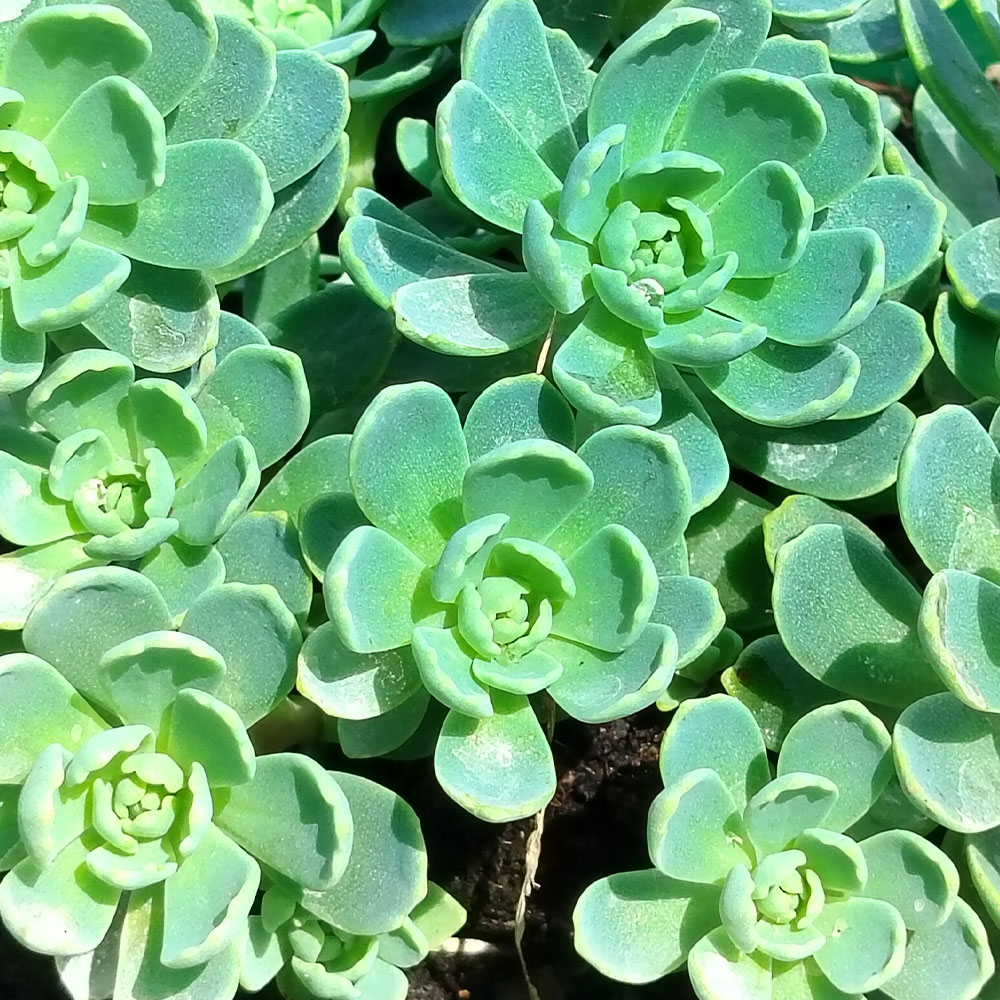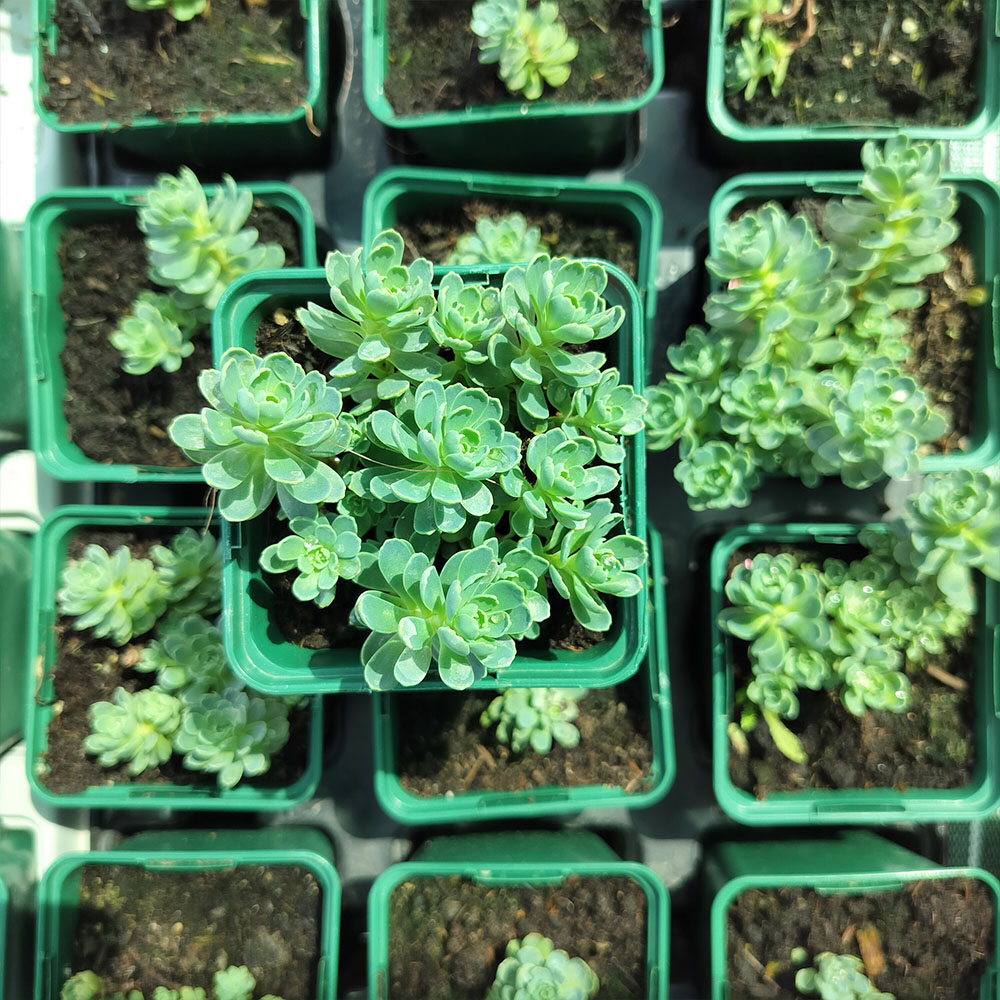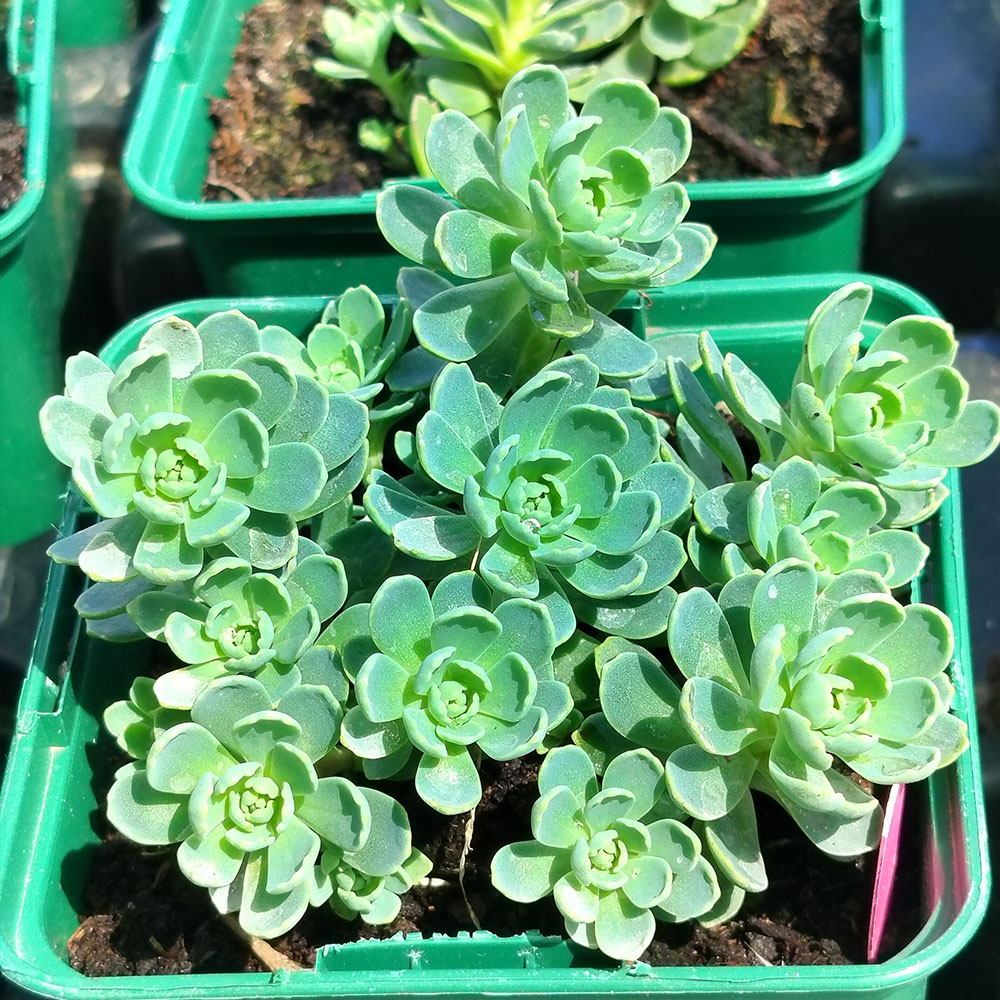No products in the cart.
Sedum pachyclados
Dainty green/gray/green succulent with rosettes and a creeping stem that can either spread or cascade.
Rated 0 out of 5
0 customer reviews
4,90 €
Only 35 item(s) left in stock!
SKU: pda204
Category: Balcony-Friendly, Bouquet, Frost Hardy, Grey Ladies, Rewild

Sedum pachyclados
4,90 €
Only 35 item(s) left in stock!
Sedum pachyclados is an elegant succulent with dainty green/gray/green rosettes and a creeping stem that can either spread or cascade.
Mature plants can become a gorgeous grey/green mound that looks as though it was carved of stone.
While it is often called a sedum, this one actually belongs to the Crassulae family.
But it still requires little coddling and enjoys an independent lifestyle.
In a windowsill, in a pot or even in your garden – allow this little perennial to bring some light and texture.
👨🌾GARDENING TIPS👨🌾: Sedum pachyclados
-
-
Perfect for rock gardens, alpine gardens, container planting, hanging baskets, or mixed succulent displays.
-
Combines beautifully with other Sedum species, Sempervivum, and Crassula for textured succulent arrangements.
-
Minimal maintenance is required, with occasional pruning to maintain shape and remove spent flower stems.
-
Learn more about caring for your Sedum:
The Tales & The Botany: Sedum pachyclados
Sedum pachyclados is frost-hardy and drought-tolerant and can thrive outdoors with full sun and great drainage.
In Greek, pachyclados means thick branched.
That’s all 🙂
🌸 Floral Morphology: Sedum pachyclados
Sedum pachyclados a low-growing, mat-forming succulent in the Crassulaceae family, with slender, needle-like, glaucous blue-green leaves arranged along trailing stems.
In summer, the plant produces small, star-shaped, yellow flowers clustered in loose inflorescences (cymes).
Flowers are actinomorphic and hermaphroditic, with five sepals and five petals, and a superior ovary.
The fleshy, water-storing leaves give the plant its resilience under drought and help maintain turgor during dry periods.
🧬 Reproductive Biology
Pollination is primarily entomophilous, attracting bees and other small insects. Sedum propagates easily through leaf cuttings or stem offsets, allowing rapid vegetative reproduction.
Seeds are produced in small capsules but vegetative propagation is far more common in cultivation.
The plant exhibits Crassulacean Acid Metabolism (CAM), opening stomata at night to conserve water while allowing photosynthesis during the day.
🦋 Ecology & Cultivation
Sedum thrive in well-drained, sandy or rocky soils under full sun, although it tolerates light shade.
It is drought-tolerant, frost-sensitive, and well-suited for rock gardens, containers, or as ground cover.
The plant is low-maintenance, requires minimal watering, and benefits from occasional pruning to remove damaged or overgrown stems.
Its vibrant leaf colors and compact growth habit make it popular for ornamental gardening and succulent collections.
Other Names
Rhodiola pachyclados
Gray stonecrop
Origin:
Afghanistan/Pakistan
| Weight | 0,5 kg |
|---|---|
| Flowering | May |
| Soil | Dry/Rocky |
| Exposure | Full Sun |
| Size | 0.10m H x as far as you let it go |
Reviews
0
Rated 0 out of 5
0 customer reviews
5
0
4
0
3
0
2
0
1
0
Only logged in customers who have purchased this product may leave a review.
Related Products
Cerastium tomentosum var. columnae
A grey-green spreading ground cover from the mountains.
A grey-green spreading ground cover from the mountains.
Rated 0 out of 5
Helichrysum orientale
A perennial with soft, ash gray foliage and yellow button flowers
A perennial with soft, ash gray foliage and yellow button flowers
Rated 0 out of 5
Salvia officinalis
A fragrant herb used in many cultures for cooking and deserts.
A fragrant herb used in many cultures for cooking and deserts.
Rated 0 out of 5
Helichrysum italicum
An evergrey, fragrant perennial that will bring a distinctly Mediterranean atmosphere.
An evergrey, fragrant perennial that will bring a distinctly Mediterranean atmosphere.
Rated 0 out of 5
Koeleria glauca Blue Sprite
An ornamental, low growing blue grass
An ornamental, low growing blue grass
Rated 0 out of 5
Artemisia alba subsp camphorata
A highly fragrant, grey-green bush.
A highly fragrant, grey-green bush.
Rated 0 out of 5
Mertensia maritima
A deciduous perennial with fleshy, blue-grey-green leaves that naturally thrives on the wind and sea swept coasts
A deciduous perennial with fleshy, blue-grey-green leaves that naturally thrives on the wind and sea swept coasts
Rated 0 out of 5
Tanacetum densum subsp amani
A shrublet composed of soft, finely divided silvery gray-white leaves.
A shrublet composed of soft, finely divided silvery gray-white leaves.
Rated 0 out of 5
Potentilla anserina
A distinctly silvery, silky and lacy perennial.
A distinctly silvery, silky and lacy perennial.
Rated 0 out of 5
Euphorbia myrsinites
Known for its draping form of silver-gray foliage and radiant blooms.
Known for its draping form of silver-gray foliage and radiant blooms.
Rated 0 out of 5
Lavandula angustifolia
A highly aromatic, flowering perennial used for cooking in many cultures
A highly aromatic, flowering perennial used for cooking in many cultures
Rated 0 out of 5
Nepeta x faassenii
Catnip is known for its grey-green, aromatic foliage and masses of lavender blue flowers.
Catnip is known for its grey-green, aromatic foliage and masses of lavender blue flowers.
Rated 0 out of 5
Jacobaea maritima
A wooly white perennial plant from the Mediterranean region.
A wooly white perennial plant from the Mediterranean region.
Rated 0 out of 5
Salvia sclarea – Clary Sage
A fuzzy perennial that is largely grown for its essential oil.
A fuzzy perennial that is largely grown for its essential oil.
Rated 0 out of 5
Artemisia Valerie Finnis
A semi-evergreen, aromatic variation on the theme of Artemisia.
A semi-evergreen, aromatic variation on the theme of Artemisia.
Rated 0 out of 5
Artemisia abrotanum
A highly fragrant, medicinal and striking grey-green bush.
A highly fragrant, medicinal and striking grey-green bush.
Rated 0 out of 5
Aegopodium podagraria ‘Variegata’
A popular light, green and white groundcover.
A popular light, green and white groundcover.
Rated 0 out of 5
Stachys byzantina
Silky white-grey leaves and tall striking flowers
Silky white-grey leaves and tall striking flowers
Rated 0 out of 5
recent view product
Crassula muscosa
A succulent with thin, spiralling square leaves
A succulent with thin, spiralling square leaves
Rated 0 out of 5
Aquilegia vulgaris Leprechaun Gold
A light for dark corners – marbled with gold foliage.
A light for dark corners – marbled with gold foliage.
Rated 0 out of 5
Crassula ovata ‘Variegata’
White stripes and everlasting beauty
White stripes and everlasting beauty
Rated 0 out of 5
Potentilla anserina
A distinctly silvery, silky and lacy perennial.
A distinctly silvery, silky and lacy perennial.
Rated 0 out of 5
Centaurea atropurpurea
A perennial thistle with intensely purplish-red flowers
A perennial thistle with intensely purplish-red flowers
Rated 0 out of 5












































There are no reviews yet.